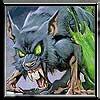I'm working on a team right now for a pet game, like Chaos in Sonic, Nintendogs, Tamagotchi, etc. You have various stat bars that you should be keeping filled (not sure of the consequences for not doing this yet - which makes me cautious) and you can level up your character by playing with them, which gives you access to more items to customize with.
So you start the game and there's your pet with a few furniture items you can click on. You can click each furniture item to access a different menu - minigames, clothes, food, medicine.
The goal, I believe, is to level up the character by playing with them so that you can customize your character more, and that's about it.
How do I convey this objective or basic concept without tutorials? Mario, Megaman X, and any direct manipulation game seems to have no trouble with this, but I don't know of any pet games or second/third person manipulation games that don't use a tutorial. Any tips?











